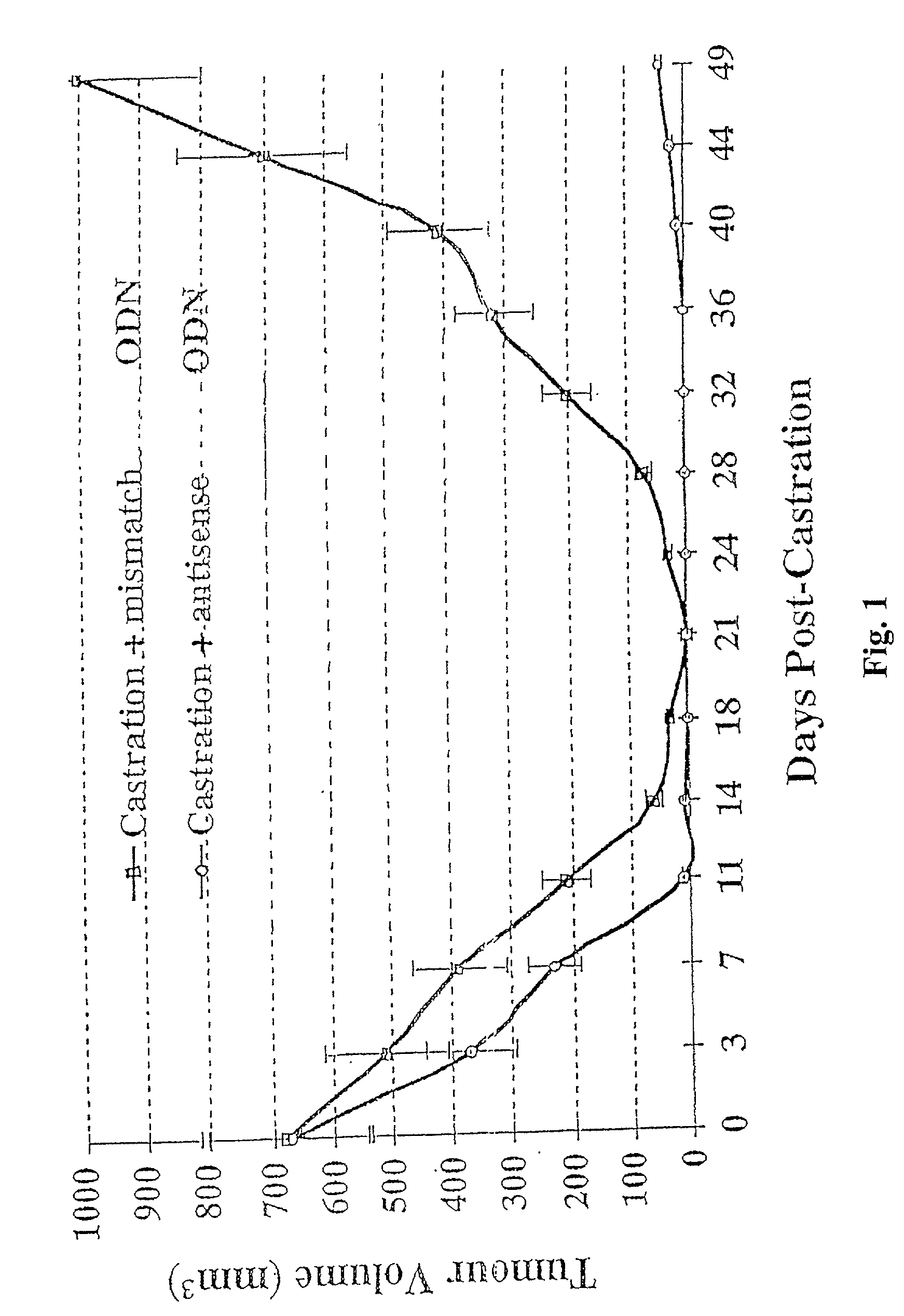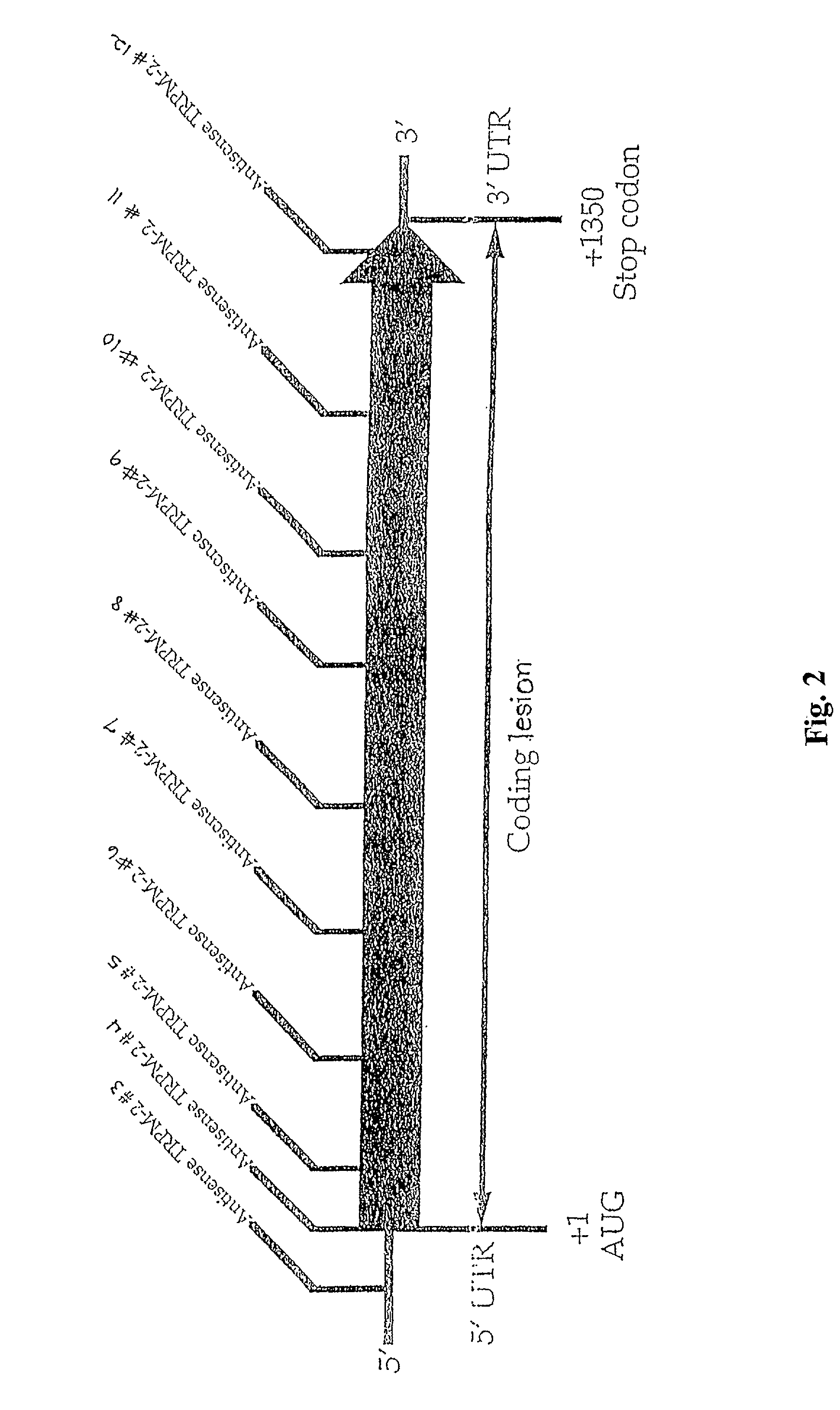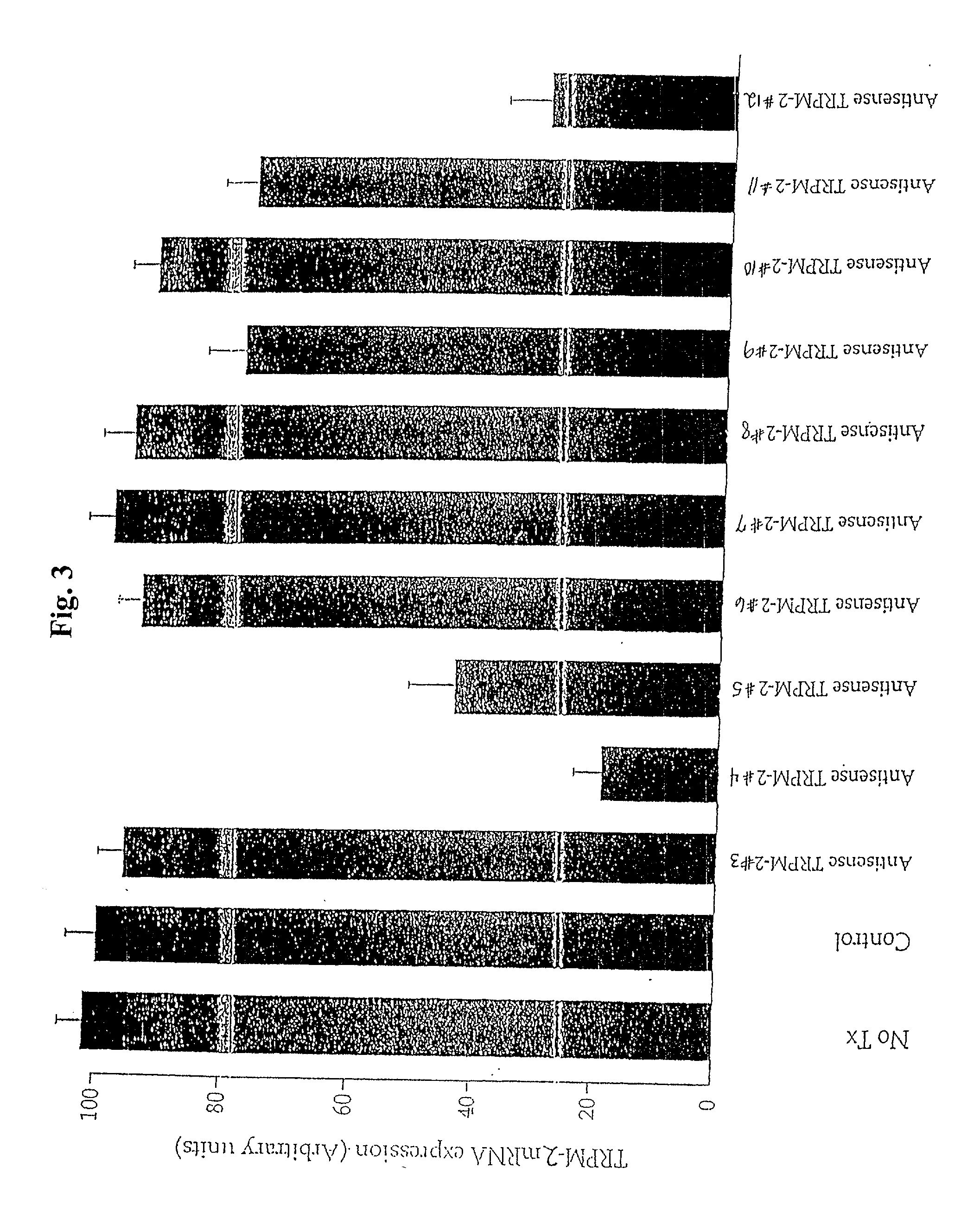TRPM-2 antisense therapy
a technology of trpm-2 and antisense, which is applied in the direction of drug compositions, phosphorous compound active ingredients, peptide/protein ingredients, etc., can solve the problems of castration-induced apoptosis not complete, regression of disease, and increased apoptosis in prostate tumors, so as to delay the onset of androgen independence, inhibit the expression of trpm-2, and delay the progression of prostatic tumor cells
- Summary
- Abstract
- Description
- Claims
- Application Information
AI Technical Summary
Benefits of technology
Problems solved by technology
Method used
Image
Examples
example 1
[0045] Shionogi tumor model experiments were performed using cells from the Toronto subline of transplantable SC-115 AD mouse mammary carcinoma. For in vivo studies, approximately 5.times.10.sup.6 cells of the Shionogi carcinoma were injected subcutaneously in adult male DD / S strain mice. When the Shionogi tumors became 1 to 2 cm in diameter, usually 2 to 3 week after injection, castration was performed through an abdominal incision under methoxyflurane anesthesia. Details of the maintenance of mice, tumor stock and operative procedures have been previously described. Bruchovsky et al., Cancer res. 50: 2275-2282 (1990); Rennie et al., Cancer Res. 48: 6309-6312 (1988); Bruchovsky et al., Cell 13: 272-280 (1978); Gleave et al., in Genitourinary Oncology, pp. 367-378, Lange et al., eds, Lippencott (1996)).
[0046] Mice were randomly selected for treatment with murine phosphorothioate antisense TRPM-2 ODN (Seq. ID No. 1) or a mismatch control (Seq. ID No. 2) which is two bases different i...
example 2
[0050] The sequence selectivity of the antisense TRPM-2 ODN (Seq. ID. No. 1) was confirmed by comparing expression levels of TRPM-2 mRNA in Shionogi tumor cells maintained in vitro, after treatment with the varying levels of antisense TRPM-2 ODN or a mismatch control (Seq. ID. No. 2). To facilitate uptake of the ODNs into the cells, the ODNs were formulated in a cationic lipid carrier (Lipofectin.TM., (Life Technologies, Inc.)). Cells were treated twice over a period of two days using the following protocol. Cells were preincubated for 20 minutes with 4 .mu.g / ml of lipofectin in serum free OPTI-MEM.TM. (Life Technologies, Inc.) and then incubated with the medium containing the selected concentration of ODN and lipofectin for four hours. The medium was then replaced with the standard culture medium.
[0051] The amount of TRPM-2 mRNA in the cells was evaluated using Northern blot analysis. As shown in FIG. 4, treatment of Shionogi cells with antisense TRPM-2 ODN reduced TRPM-2 mRNA leve...
example 3
[0052] Shionogi cells maintained in vitro were treated with varying amounts of taxol alone or in combination with 500 nM antisense TRPM-2 ODN (Seq. ID. No. 1) or the mismatch control (Seq. ID No. 2). The cells were treated twice, as described in Example 2, and the percentage of viable cells remaining was determined. The results are summarized in FIG. 5. As shown, the inclusion of antisense TRPM-2 ODN shifted the dose-response curve to the left, lowering the IC.sub.50 by a factor of 5 to 10. Similar results were achieved using mitoxanthrone in place of paclitaxel (FIGS. 12A and 12B).
PUM
| Property | Measurement | Unit |
|---|---|---|
| diameter | aaaaa | aaaaa |
| concentration | aaaaa | aaaaa |
| stability | aaaaa | aaaaa |
Abstract
Description
Claims
Application Information
 Login to View More
Login to View More - R&D
- Intellectual Property
- Life Sciences
- Materials
- Tech Scout
- Unparalleled Data Quality
- Higher Quality Content
- 60% Fewer Hallucinations
Browse by: Latest US Patents, China's latest patents, Technical Efficacy Thesaurus, Application Domain, Technology Topic, Popular Technical Reports.
© 2025 PatSnap. All rights reserved.Legal|Privacy policy|Modern Slavery Act Transparency Statement|Sitemap|About US| Contact US: help@patsnap.com



